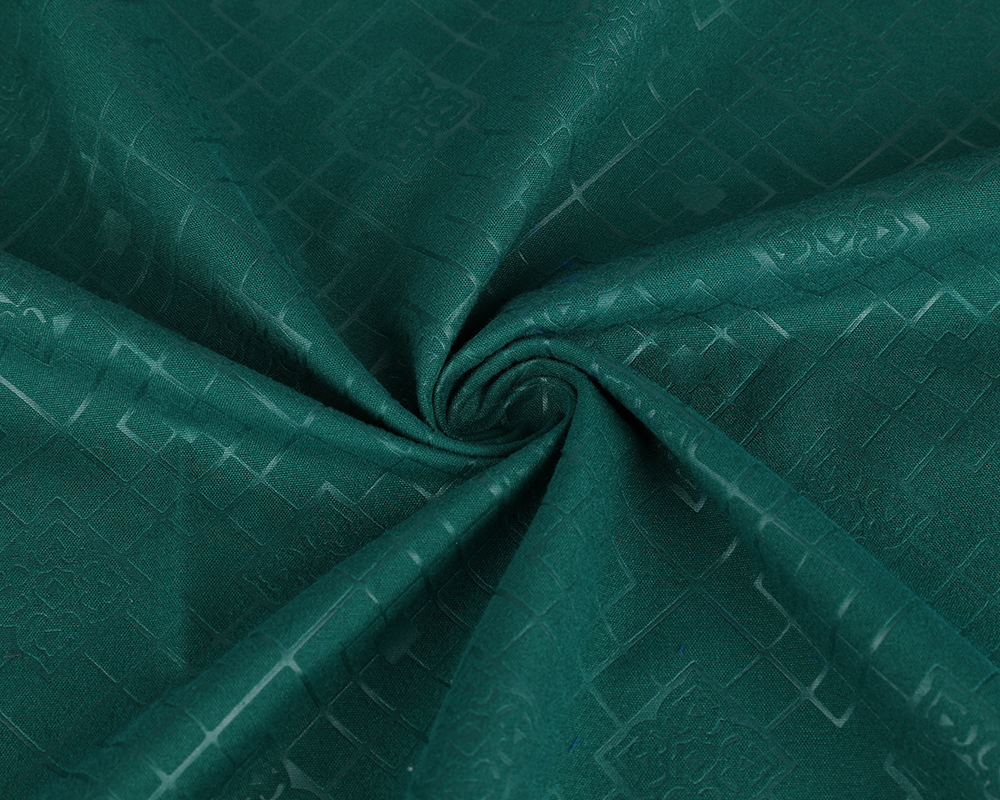Search...
100% Polyester Dyed Fabrics have distinct advantages and limitations when it comes to moisture absorption and breathability, particularly in humid environments. While polyester is not as inherently breathable or moisture-absorbing as natural fibers like cotton, advances in fabric treatments, texture, and construction have allowed polyester fabrics to perform better under humid conditions.
Polyester is hydrophobic, meaning it repels water rather than absorbing it. This characteristic helps the fabric dry quickly when exposed to moisture, including sweat. In a humid environment, this quick-drying property can be a significant advantage, as the fabric doesn't retain moisture for long, reducing the discomfort associated with wet, clammy clothing.
Modern polyester fabrics are often treated with moisture-wicking finishes that draw moisture away from the skin and spread it across the fabric’s surface. This allows the moisture to evaporate more quickly, improving the comfort of the wearer in humid conditions. The moisture-wicking effect helps in maintaining a dry surface against the skin, reducing the sensation of sweat build-up.
Advanced microfiber versions of polyester have been developed that allow for better airflow and breathability. The finer fibers increase the surface area of the fabric, which allows more air to pass through, improving the fabric's breathability. This makes it a better option for humid environments where air circulation and moisture evaporation are important for comfort.
Polyester fabrics can be engineered with specific weaves or knit patterns that enhance breathability. Fabrics like mesh or those with perforated structures allow air to circulate more freely, which is especially beneficial in humid environments where high moisture levels make it harder to maintain a comfortable body temperature.

One of the major advantages of 100% polyester in humid conditions is its resistance to mold and mildew growth. Unlike natural fibers, polyester is not prone to absorbing water, which significantly reduces the risk of mold or mildew developing within the fabric. In high humidity, where natural fibers like cotton may retain moisture and encourage fungal growth, polyester stays more hygienic and odor-free.
Since polyester does not retain moisture, it also prevents the growth of bacteria that cause odors. This makes it a more hygienic option for humid environments, especially for activewear, bedding, and sports uniforms, where sweating is common.
Polyester fibers do not shrink or stretch in humid conditions, unlike natural fibers. This makes polyester fabrics more stable and resistant to changes in shape or size due to humidity. In addition, polyester maintains its structural integrity, providing consistent performance even in wet or humid environments.
Polyester fabrics are less likely to absorb water or show water stains when exposed to humid conditions, unlike natural fibers, which may become discolored or weakened by prolonged exposure to moisture. This helps maintain the fabric's aesthetic appearance over time.
While polyester may not naturally be as breathable as cotton, modern polyester fabrics are designed to be lightweight and soft, providing comfort in humid conditions. The fabric's breathability can be enhanced through specific finishes, such as those that allow air to pass through more efficiently, making it more suitable for hot, humid weather.
100% polyester dyed fabrics can be finished with softeners or treated with anti-static finishes, making them more comfortable to wear in humid climates. These treatments also reduce friction and clinginess, preventing discomfort caused by sweat or moisture accumulation.
In a humid environment, 100% polyester dyed fabrics offer several advantages, including quick-drying, moisture-wicking, resistance to mold and mildew, and long-lasting performance. With appropriate fabric treatments and designs, polyester can be engineered to improve breathability and comfort in humid conditions. However, it is important to balance these benefits with its limitations, particularly in terms of absorbency, and consider advanced treatments or blends for enhanced performance in extremely high-humidity settings.

 English
English
 中文简体
中文简体
 Español
Español





.jpg?imageView2/2/format/jp2)






